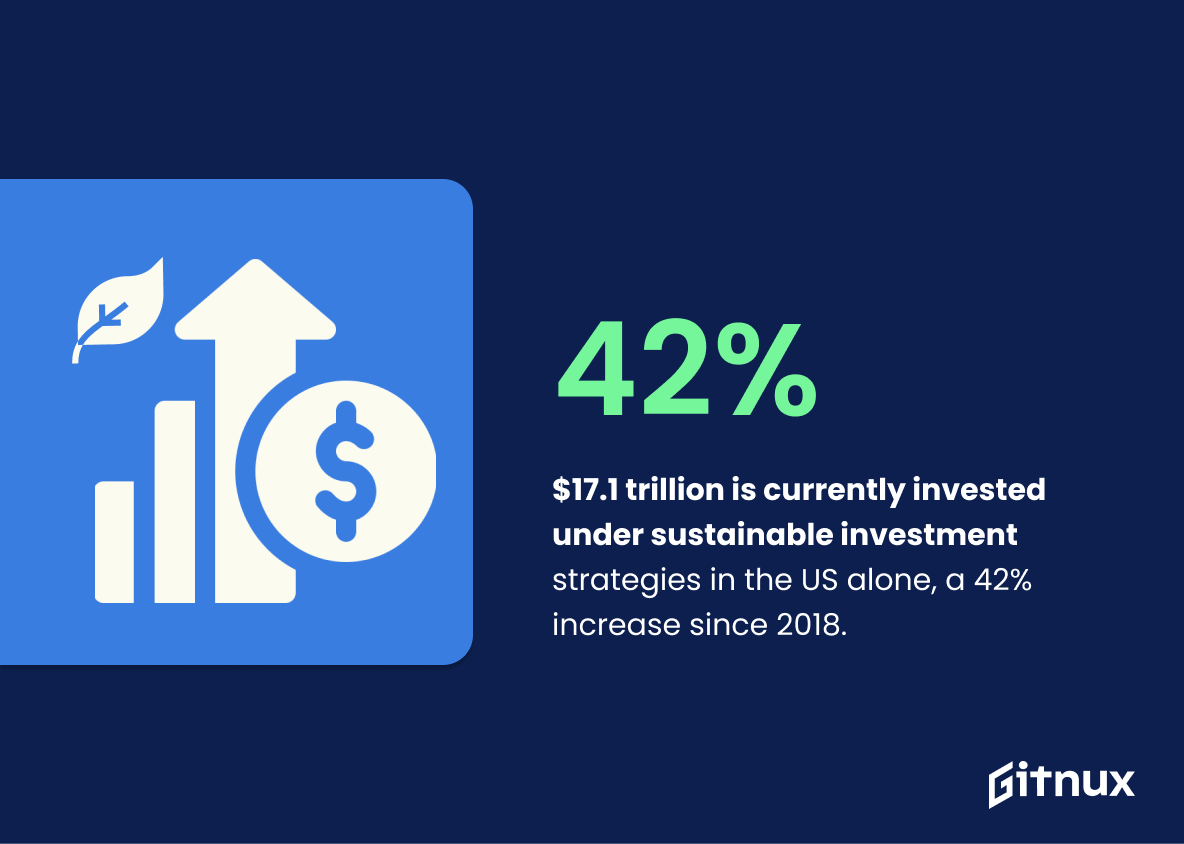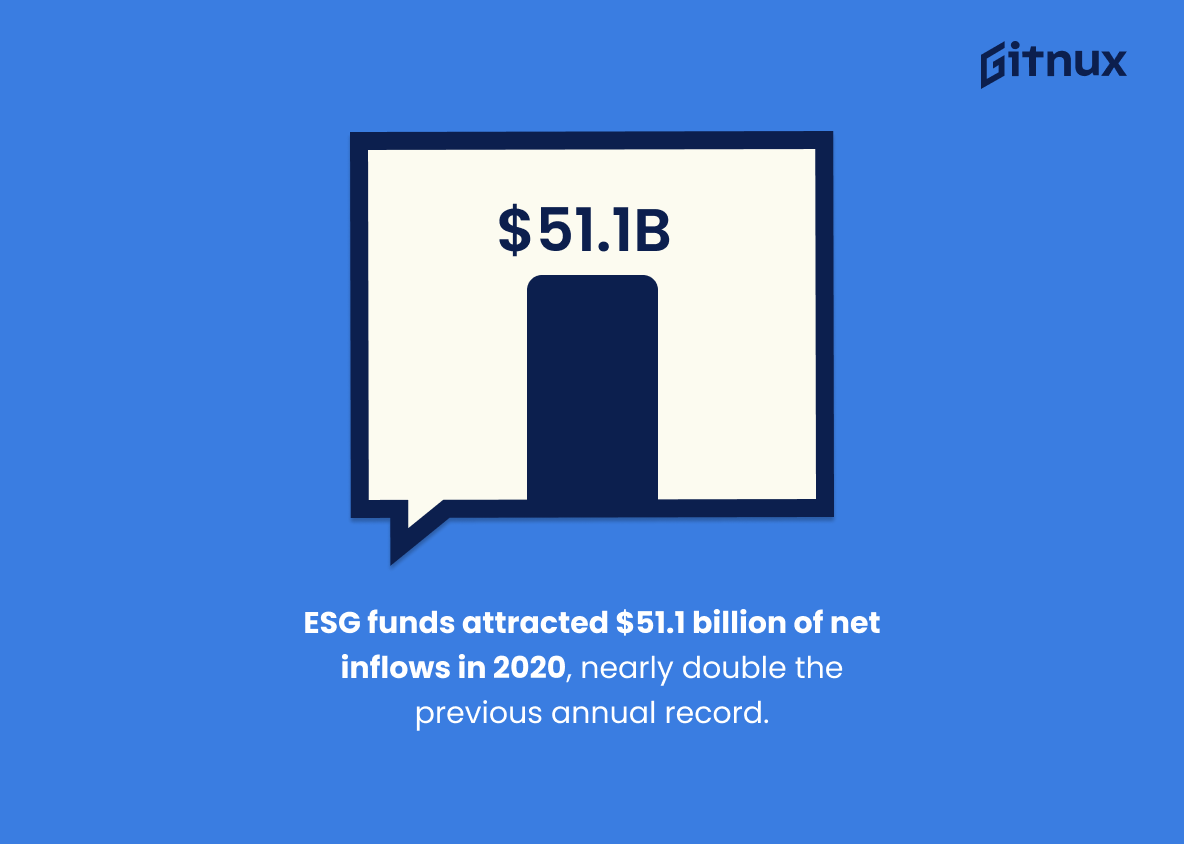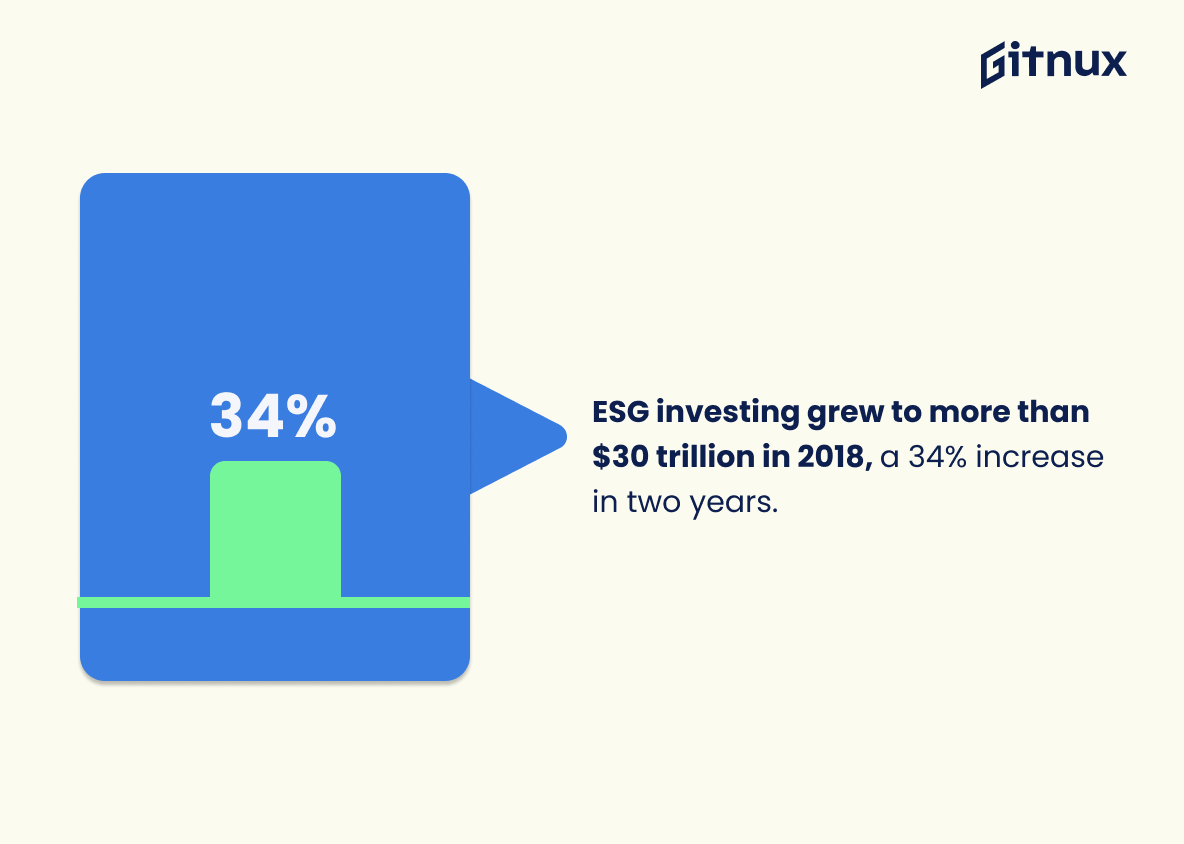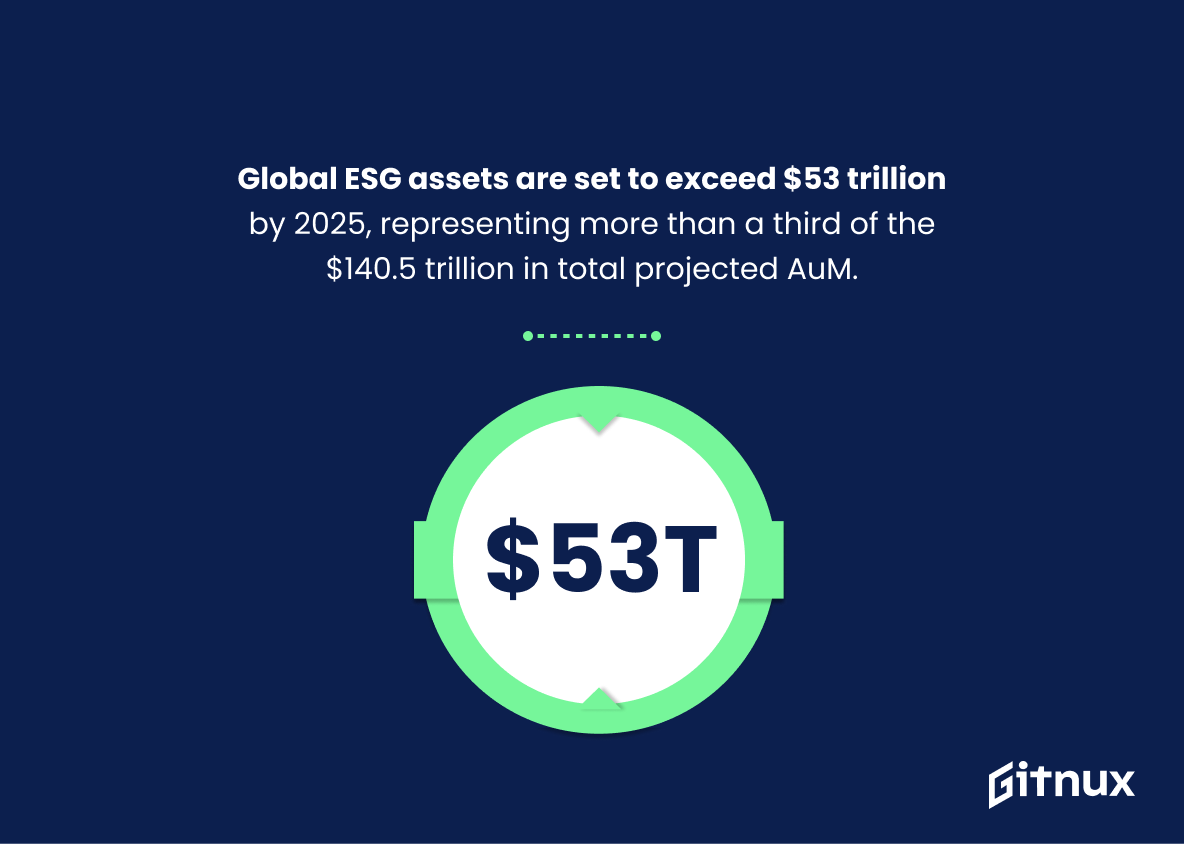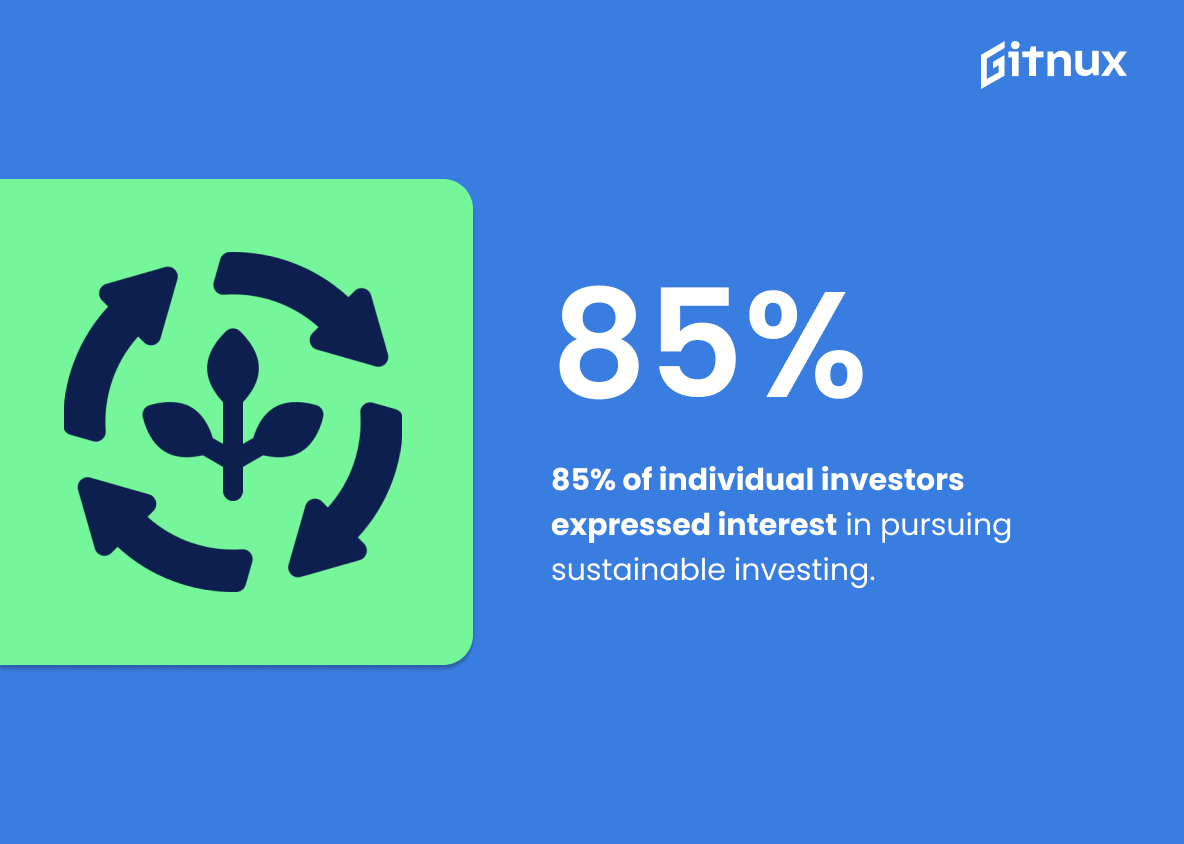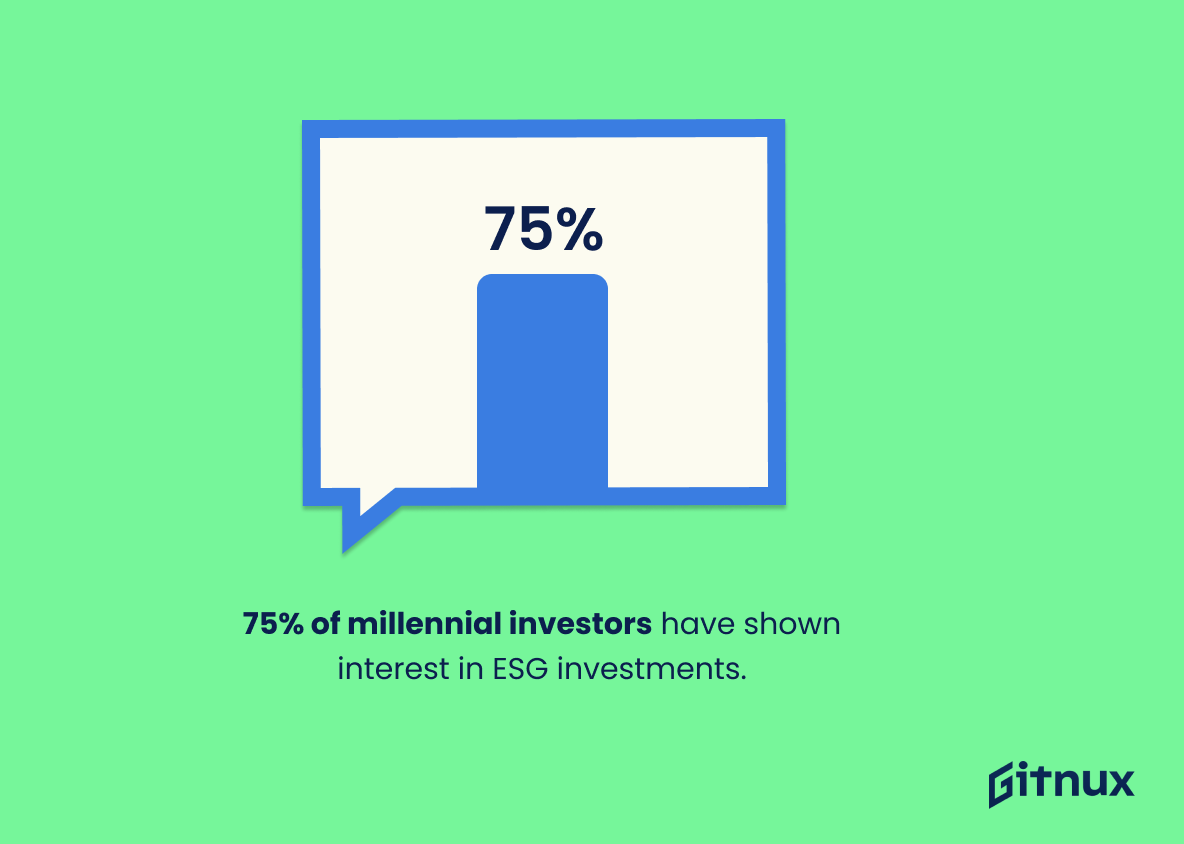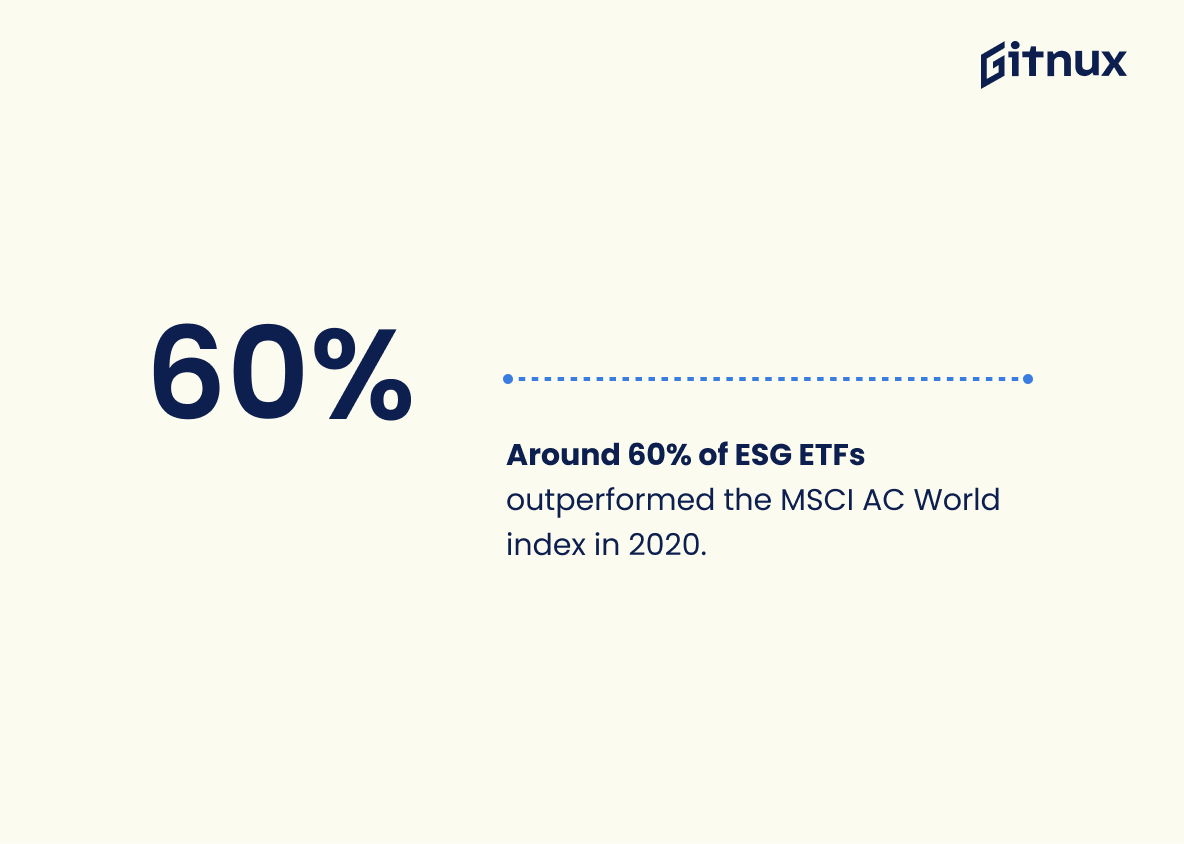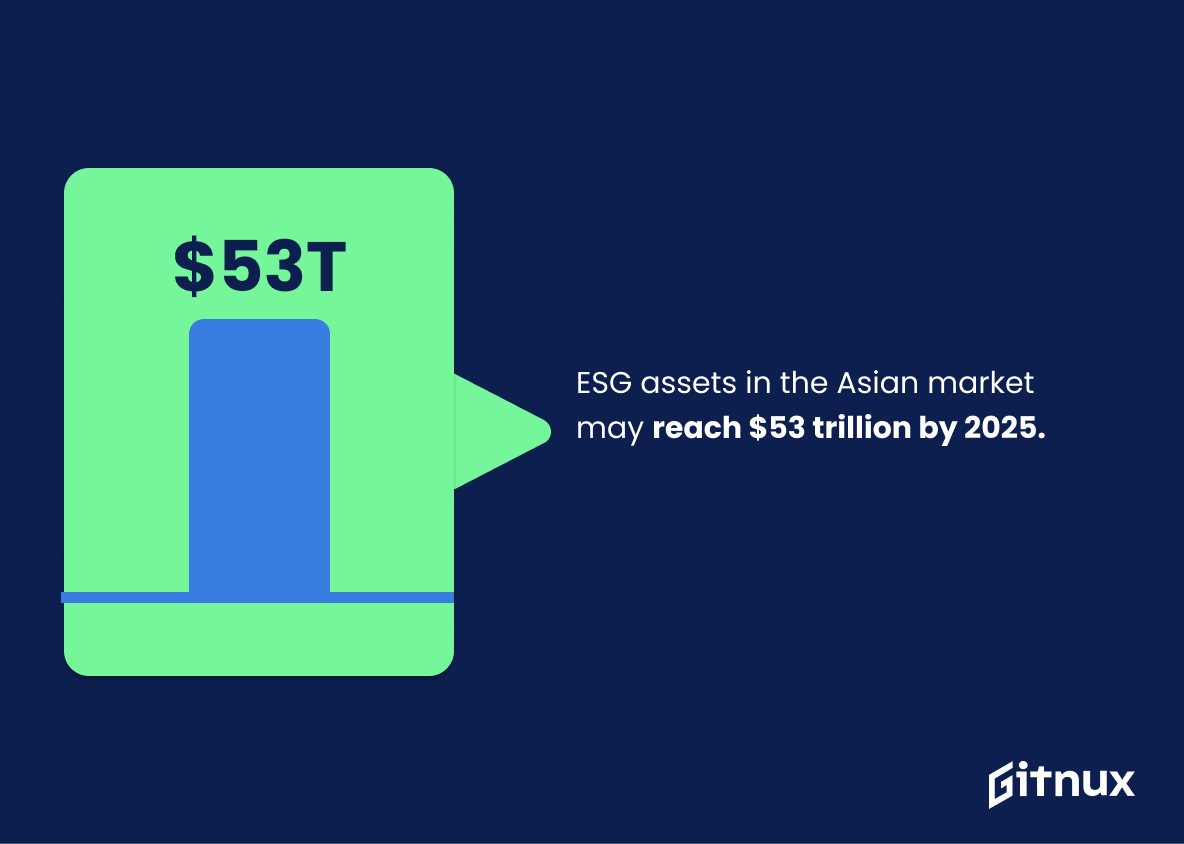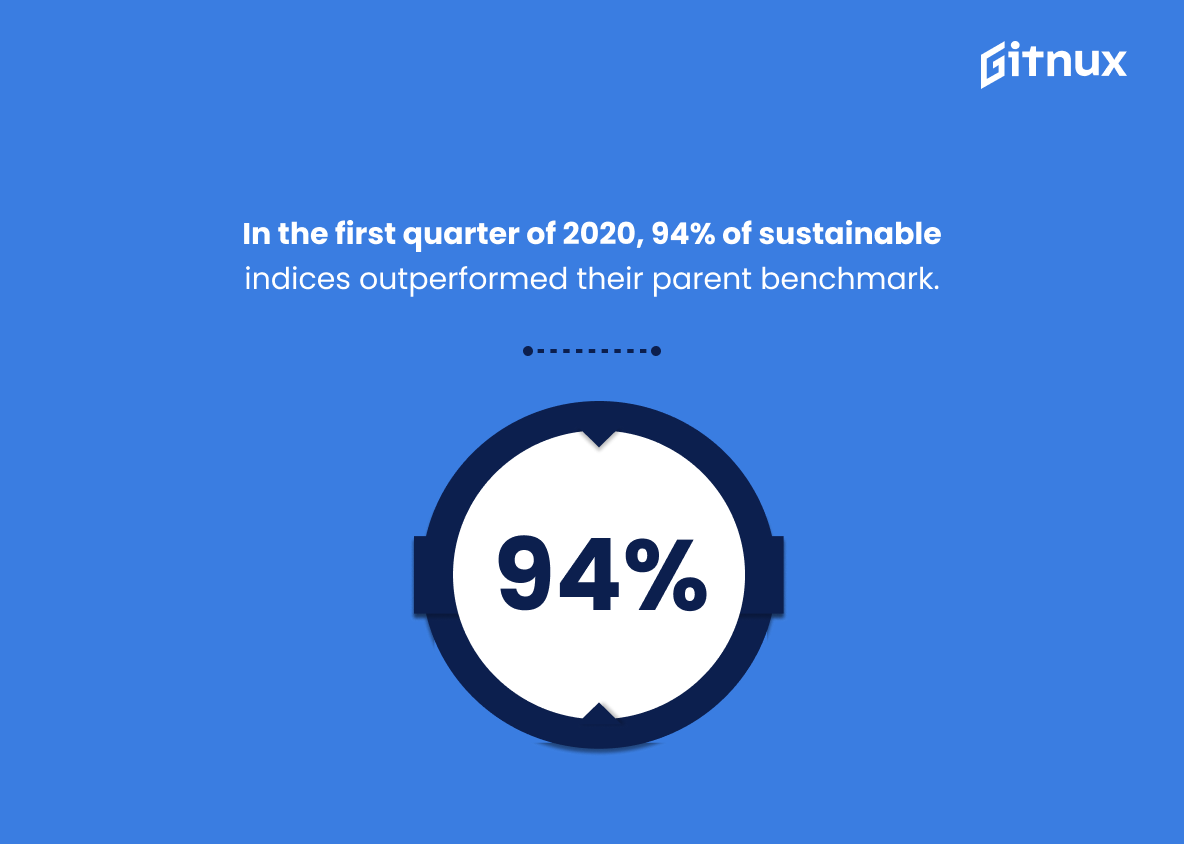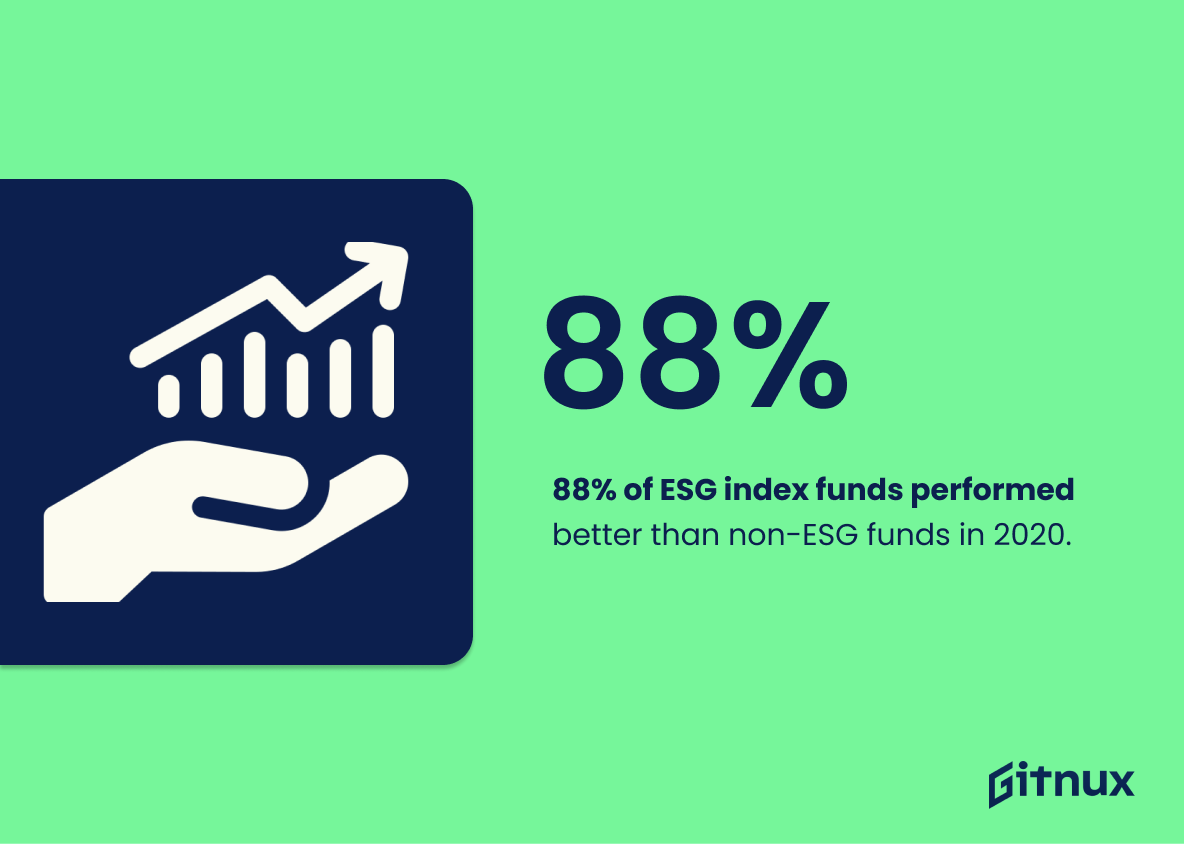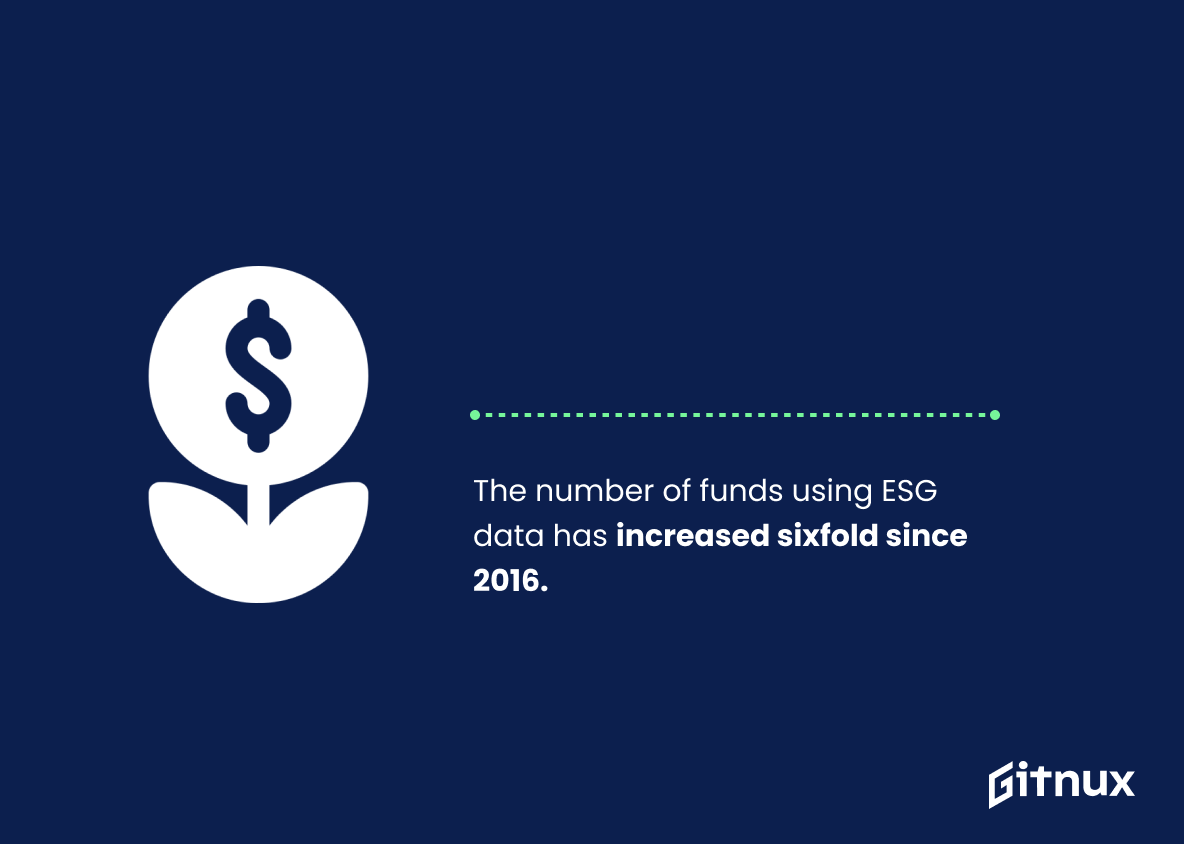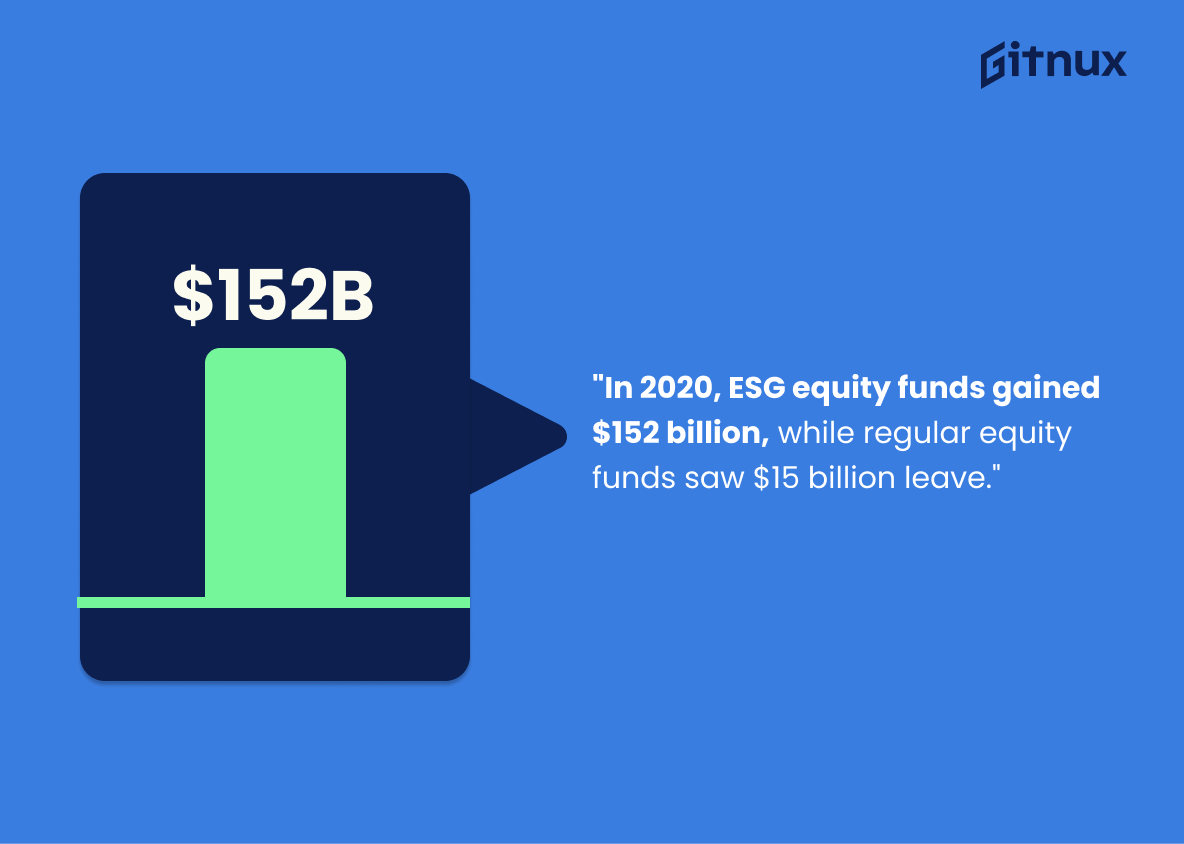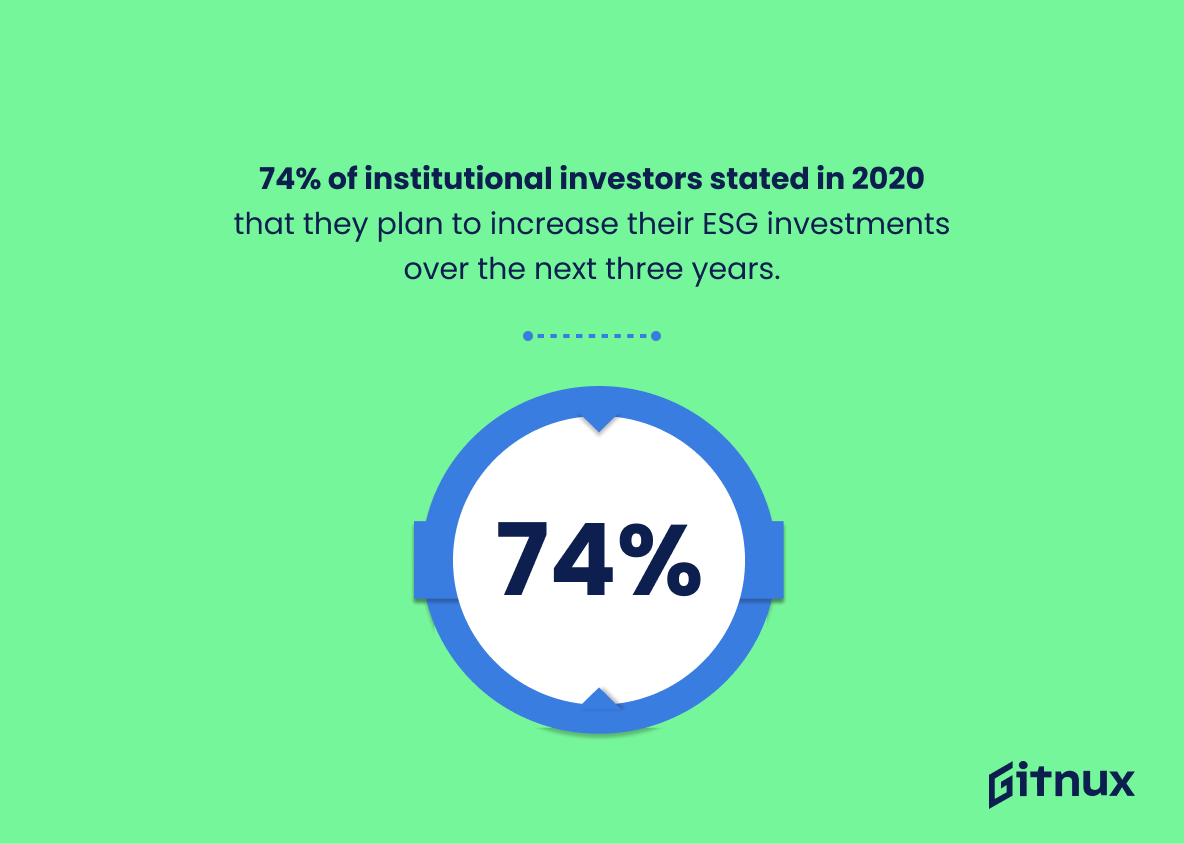In the ever-evolving world of investing, Environmental, Social, and Governance (ESG) factors have rapidly emerged as significant determinants for savvy investors. With a marked shift towards sustainable and accountable investing, ESG principles present a fresh perspective, driving global financial markets into a new era.
Feast your eyes on some electrifying ESG investing statistics that beautifully illustrate this profound metamorphosis. This blog post will reveal how ESG investing is more than just a passing trend — it’s a seismic shift that’s set to shape the investment landscape for generations to come. Buckle up as we delve deep into compelling statistics and explore the burgeoning world of ESG investing.
The Latest ESG Investing Statistics Unveiled
$17.1 trillion is currently invested under sustainable investment strategies in the US alone, a 42% increase since 2018.
The staggering $17.1 trillion figure, currently invested in sustainable strategies across United States points to a profound paradigm shift in the investing landscape. The impressive hike of 42% since 2018 illuminates a growing momentum and hunger for sustainable investing. This transformation not only reflects the investment community’s heightened awareness of environmental, social and governance (ESG), but also solidifies ESG’s role as a formidable player in the investing arena.
Such a prominent rise acts as a beacon, guiding hesitant investors towards sustainable strategies, essentially reshaping the future of investment. This number shatters any remnants of the illusion that ESG investing is a passing trend, solidifying its place as a transformative force in mainstream investing.
ESG funds attracted $51.1 billion of net inflows in 2020, nearly double the previous annual record.
Witnessing the monumental shift that occurred in 2020, with ESG funds drawing in a staggering $51.1 billion of net inflows – almost doubling the previous annual record – paints an invigorating picture of the trend that’s revving up among investors. This not only underscores the escalating appetite for environmentally friendly, socially responsible and governance-focused investing, but it also signals a robust transformation in global investment attitudes.
Garnering such exceptional inflows, ESG continues to transition from a sideline to a mainstream investment criteria, thereby setting up a ripple effect in the way people invest today. Indeed, this dramatic financial landscape makeover is a seminal moment in ESG investing history. So, power up your calculators and start reevaluating your portfolio, because ESG isn’t a fleeting phase – it appears it’s here to stay.
72% of institutional investors expressed a belief that it’s very or extremely important to align their investments with their organizational values.
Highlighting a significant shift in investment paradigms, the revealing statistic of 72% of institutional investors aligning their investments with their organizational values vividly exemplifies the growing interest in ESG (Environmental, Social, and Governance) investing. In the landscape of ESG investing statistics, this number showcases a surge in the pivot towards ethically conscious investments.
Transcending the traditional notions of investment strategies dictated purely by financial gain, these investors appear to place a heightened emphasis on the core principles of their organizations. This trend potentially signals an influential shift towards incorporating societal impact into financial decision-making. In essence, it underlines the burgeoning relevance of ESG considerations in contemporary investing matrix, casting a light on the increased demand for companies that prioritize environmental, social and governance ethics alongside profitability.
ESG investing grew to more than $30 trillion in 2018, a 34% increase in two years.
In the realm of ESG investing, these figures are the written testimony of a silent financial revolution for good. Engulfing more than $30 trillion in 2018 with a 34% increase within a couple of years, they illustrate the surging appetite for ESG investing. Glowing brightly amid the grey numbers, these statistics don’t just crunch figures, they echo the shifting patterns of an evolving investment landscape.
They underline the indomitable spirit of ethical investors to strike fine balance between making monetary gains and maintaining moral integrity. Thus, presenting a riveting tale of how investors are using their financial clout to drive societal change and environmental sustainability. The numbers bear witness to the paradigm shift of investments from focusing merely on financial returns to include environmental, social and governance considerations.
Global ESG assets are set to exceed $53 trillion by 2025, representing more than a third of the $140.5 trillion in total projected AuM.
Revel in the revelation that global ESG (Environmental, Social and Governance) assets are projected to skyrocket beyond $53 trillion by 2025. With this trajectory, ESG assets would command a significant share, over one-third, of the astronomical $140.5 trillion total forecasted Assets under Management (AuM). This anticipated growth underscores the elevation of ESG investing from a niche offering to a dominant force in the investment landscape.
It signals a seismic shift among investors favoring responsible investments – a fact that adds depth to the narrative of a blog post on ESG Investing expanding its footprint worldwide. No longer relegated to ‘alternative’ or ‘impact’ investing, ESG principles are intertwined with mainstream investment strategies, paving the way for a sustainable economic future.
85% of individual investors expressed interest in pursuing sustainable investing.
In the realm of ESG (Environmental, Social, and Governance) investing statistics, the figure of “85% of individual investors expressing interest in sustainable investing” serves as a captivating headline. This high percentage showcases the shifting attitudes and priorities of investors towards sustainability, underlining a paradigm shift towards a deeper appreciation for the long-lasting impact of investment decisions, beyond mere profit.
Emphasizing this statistic in the discussion on ESG investing underscores that this isn’t just a niche strategy pursued by a small segment of market participants. Rather, it’s a new norm that most individual investors are moving towards. This growing trend reinforces the importance of ESG factors in investment considerations, marking a twist that will shape the investing landscape’s future. Not only does it demonstrate a collective realization of our environmental responsibility, but it also highlights how investors are redefining the conventional understandings of value and return on investment.
This trend is an important moment in finance history, reflecting a crossroads where investing meets societal impact. It’s not just a number – but a clear voice of many, declaring their resolve not to compromise the planet’s health for financial gains. Ultimately, this striking statistic underscores the importance and relevance of ESG investing statistics in today’s evolving financial world.
75% of millennial investors have shown interest in ESG investments.
Diving into the heart of ESG investing statistics, we sail upon a remarkable finding – a commanding 75% of millennial investors demonstrating an interest in ESG investments. These roaring tides of millennial interest translates into a powerful, fundamental shift in investment dynamics. This goes far beyond just placing their bets on trendy stocks; it resonates deeper, shedding light on their inclination towards responsible investments.
Their gaze is fixed on corporations that not only offer financial gains, but also have a notable commitment to environmental, social, and governance (ESG) factors. Such a high level of interest among millennials paints a vibrant and more conscientious future for the investment sector. Therefore, any discussion, evaluation, or analytical exploration of ESG investing would be incomplete without acknowledging the transforming force of this millennial trend.
Around 60% of ESG ETFs outperformed the MSCI AC World index in 2020.
This compelling figure shines a spotlight on the considerable strength and growth potential within Environment, Social, and Governance (ESG) Exchange-Traded Funds (ETFs). Painting a clear picture of the performance landscape, it underlines how, in 2020 alone, the majority – 60% to be precise – of ESG ETFs eclipsed the performance of the MSCI All Country World index.
This considered, it doesn’t merely imply that ESG-centric investment strategies are gaining traction; it demonstrates their capacity to deliver robust financial returns. In the realm of ESG Investing Statistics, this piece of data marks a critical turning point which suggests that conscious, purpose-driven investments don’t have to sacrifice profitability.
ESG assets in the Asian market may reach $53 trillion by 2025.
Forecasting a monumental rise in ESG assets to $53 trillion in the Asian market by 2025, this statistic acts as a beacon, illuminating the future trajectory of sustainable investments. Within the frame of a blog post about ESG Investing Statistics, it serves as a testament to the growing commitment of investors in Asia towards sustainable practices, echoing the global shift towards environmental, social, and governance-focused investment.
Not only does it signify the growing significance of ESG investing, but it also hints at the potential that Asia, a region historically under-represented in the ESG field, holds in shaping the future of sustainable finance. This statistic is like a pulse, eventuating the accelerating heartbeat of ESG investing in Asia.
In the first quarter of 2020, 94% of sustainable indices outperformed their parent benchmark.
Highlighting the exceptional performance of 94% of sustainable indices surpassing their parent benchmark in the first quarter of 2020 serves as a remarkable testament to the powerful potential of ESG investing. This statistic reinvents traditional investment notions, breaking through the stereotype that prioritizing ethical, sustainable, and governance factors could hamper financial performance.
In the milieu of a blog post on ESG Investing Statistics, this illustration acts as a financial beacon, guiding individuals and institutions towards more socially responsible investments. Beyond a simple comparison, it underscores the intriguing likelihood of these sustainable indices not only matching but actually besting their traditional counterparts, presenting an appealing avenue for financial growth that is as much about profits as it is about principles.
It implies the dawn of a global shift where capital can, and indeed does, flow into sustainable projects without compromising returns. A clear sign that doing well by doing good is more than a utopian dream, it’s a current, viable, and lucrative reality in the investing world.
88% of ESG index funds performed better than non-ESG funds in 2020.
The intertwined strands of financial performance and responsible investing artfully weave the narrative of ESG investing. Anchoring this narrative is the compelling statistic – ‘88% of ESG index funds outperformed non-ESG funds in 2020.’ Its vivid presence in the painting of ESG investing statistics serves as undeniable proof of the potent synergism between ethical considerations and profitable returns.
In the ruthless world of investing, where every percentage point is a battle, this statistic stands like a beacon, illuminating the path to potentially more fruitful investments. Moreover, it crystallizes the real-world impact of ethically driven investment strategies, knocking down the long-held brick wall of skepticism that ethical decisions and financial gains are mutually exclusive.
So, don’t just gloss over it. Pause, and let the potent truth of this statistic seep in – that eschewing ESG considerations no longer just carries ethical ramifications but tangible financial consequences too. As we march towards a future where corporate responsibility and profitability are seen not as trade-offs but complementary aspects, this statistic will increasingly gain in importance. It is much more than a number – it is a declaration, signaling the undeniable financial potential of ESG investing.
Global assets following ESG strategies could account for around 50% of mutual fund assets by 2025.
Revolving around the world of ESG (Environmental, Social, and Governance) investing, this particular statistic shines a significant spotlight. It graphically predicts that approximately 50% of mutual fund assets globally could be guided by ESG standards by 2025. This figure represents an enormous shift in investment worldviews, acting as a financial beacon for the rising trend towards responsible and sustainable investing. Its inclusion drives home the intensity and speed at which ESG investing is not just gaining traction but is poised to become a dominant player.
Riding the wave of this information, readers can catch a glimpse of the future, understanding that ethical investment decisions today could lead to commanding returns tomorrow. This impressive surge also underscores the participants’ escalating focus on tackling environmental issues, social responsibility, and corporate governance, thus promising a twofold outcome – fostering better corporate practices and ensuring sustainable financial growth.
The number of funds using ESG data has increased sixfold since 2016.
In a blog post focusing on ESG (Environmental, Social, Governance) investing statistics, peaks, and valleys are always expected. However, witnessing a sixfold rise in the number of funds using ESG data since 2016 is nothing short of a seismic shift. Not merely a statistic, it serves as a beacon, illuminating a path for other investment funds, and revealing a rising trend of responsibility, sustainability, and ethical focus within the investment world.
This stunning increase echoes a broader change; society’s growing emphasis on sustainable and responsible behavior is being mirrored emphatically in the financial realm. It isn’t simply about profit anymore; it’s about social responsibility and the health of our planet. This statistic offers food for thought: it’s not just about catching a wave, but about understanding the tide – the tide that is moving towards sustainable investing in large strides.
More than half of investors (56%) believe ESG portfolios will become the new normal in the next 5 years.
In the bold landscape of investing, this compelling statistic acts as a powerful beacon, signaling a prominent shift in investment strategies. The survey reveals that a significant majority of investors, standing at 56%, foresee ESG portfolios becoming the norm in the near future. This represents more than just a passing trend; it’s a clear reflection of growing consciousness about the crucial role of environment, social, and governance factors in long-term, sustainable wealth creation.
Investors are, in essence, acknowledging a future where ESG investment is not the exception, but the standard. This highlights the escalating importance of integrating ESG factors into investment analyses and decision-making processes, making it a key point of discussion for a blog post dedicated to ESG investing statistics.
In 2020, ESG equity funds experienced inflows of USD 152 billion, compared to USD 15 billion of outflows for regular equity funds.
Showcasing the paradigm shift in global investment trends, the statistic provided poses an insight into the growing popularity of ESG (Environmental, Social, and Governance) investing. The overwhelming inflow into ESG equity funds, to the tune of USD 152 billion in 2020, serves as a powerful testament to investors’ expanding consciousness towards sustainable investing.
On the contrary, the simultaneous outflows of USD 15 billion from regular equity funds symbolize an implicit shift towards impact investing. This discrepancy underscores the increasing investor demand for responsible investments that align financial returns with their values and societal impact. This trend unveils the potential for ESG investment to continue to grow and command a critical role within the broader financial landscape, making it an essential element in any discussion on ESG investing statistics.
74% of institutional investors stated in 2020 that they plan to increase their ESG investments over the next three years.
Highlighting the figure that 74% of institutional investors intend to bolster their ESG investments over the next three years certainly sheds a luminous beam on the growing significant trend in the investing universe. It emphasizes how institutional investors are dramatically recognizing the tangible impacts that Environmental, Social, and Governance (ESG) factors can have on their investments’ long-term risk and return.
This not only conveys the burgeoning commitment towards sustainable investments, it also intimates the shift in focus from traditional financial analysis to a more holistic approach, one that equally appreciates the significance of sustainable metrics. Drawing attention to this statistics gives readers a powerful insight into the leveled-up sustainability consciousness in the investment realm, and encourages a deeper plumb into other interesting findings about ESG investing’s widespread adoption.
80% of those surveyed in the investment community agree that ESG factors are significantly more important than they were five years ago.
The transformational dance of ESG investing statistics becomes distinctly evident with surprising insights such as the fact that 80% of the surveyed participants in the investment community now espouse the significance of ESG factors more than they did half a decade ago. This stark shift in perception mirrors a sea of change on how ESG-related considerations are fundamentally altering investment platforms globally.
This compels anyone involved in ESG investing, be it seasoned players or fledgling investors, to take note. Not only does it illuminate the growing recognition of ESG factors but underlines their pivotal role in shaping investment strategies. Thus, it’s like a beacon guiding potential investors towards understanding how investment landscapes are being redefined by ESG components and the need to adapt to this trend.
In 2019 alone, ESG-based investments saw a record-setting flow of more than $20.6 billion.
Drawing attention to the record-setting flow of over $20.6 billion directed towards ESG-based investments in 2019, effectively illustrates the growing trend and surging interest in ESG investing. This colossal figure underscores the shifting preferences of investors towards more sustainable and responsible business practices. As a sign of this shift, the financial landscape is witnessing a transformation where returns aren’t the sole benchmark for investments.
The emphasis on environmental, social, and governance factors is intensifying among conscious investors. Therefore, this particular statistic paints a vivid picture of ESG investing as an increasingly popular and valuable strategy, setting the arena for future investment trends.
Global ESG-focused assets could reach $53 trillion by 2025, making up about one-third of the $140.5 trillion in projected total assets under management.
Painting the grandeur of the future financial landscape, this statistic reflects how the ESG-centric investments are not a mere flash in the pan but a burgeoning driving force in the global investment scenario. By 2025, we can predict the emergence of a new order in the financial ecosystem, with ESG-focused assets asserting their dominance by representing about one-third of the $140.5 trillion in total assets under management.
What a force to reckoned with. Such meteoric trajectory is an unyielding testament to the fact that investors across the world are increasingly shouldering the responsibility to foster sustainability while seeking wealth accumulation. Evidently, the shift towards ESG investing is not perceived as compromising returns, but rather acknowledged as a savvy, ethical and sustainable strategy. Quite a fascinating narrative to ponder over in the framework of ESG Investing Statistics, isn’t it?
ESG fund flows in Europe hit a record of $120 billion in Q1 2020.
Reflecting upon the staggering surge to $120 billion in ESG fund inflows in Europe during Q1 2020 provides a fascinating depiction of the rising tide toward ESG investing. It isn’t simply an illustration of significant growth, but a defining moment that hints at the increasing priority of sustainable, ethical practices in the investment realm.
This is a clear touchstone for a seismic shift, symbolizing how investors are becoming progressively aware and responsive to ESG considerations in their portfolio selections. Furthermore, this record-breaking inflow is indicative of a larger transformation in investor psychology and can be perceived as a bellwether for the future direction of international investing trends.
Conclusion
In summary, ESG investing is not just a passing trend but a major player in the financial markets, changing how investments are made. The impressive statistics we’ve explored underscore the significance of ESG investing in the current financial landscape. Investors are becoming progressively more aware of their power to shape a sustainable future via their investment choices.
Companies are also recognizing the importance of ESG in ensuring longevity and profitability. As ESG investment continues to grow in popularity and importance, both businesses and investors must stay ahead of the curve. No longer a niche area, ESG investing has convinced the critics with its impressive statistics, showing the world that sustainable investment is profitable, responsible, and effective.
References
0. – https://www.www.morganstanley.com
1. – https://www.www.businesswire.com
2. – https://www.www.edelman.com
3. – https://www.www.bnnbloomberg.ca
4. – https://www.www.bloomberg.com
5. – https://www.www.gsi-alliance.org
6. – https://www.www.ft.com
7. – https://www.www.blackrock.com
8. – https://www.www.cnbc.com
9. – https://www.www.morningstar.co.uk
10. – https://www.citywireusa.com
11. – https://www.www.ipe.com
12. – https://www.www.ussif.org
13. – https://www.www.refinitiv.com
14. – https://www.www.morningstar.com
15. – https://www.www.fidelity.com
